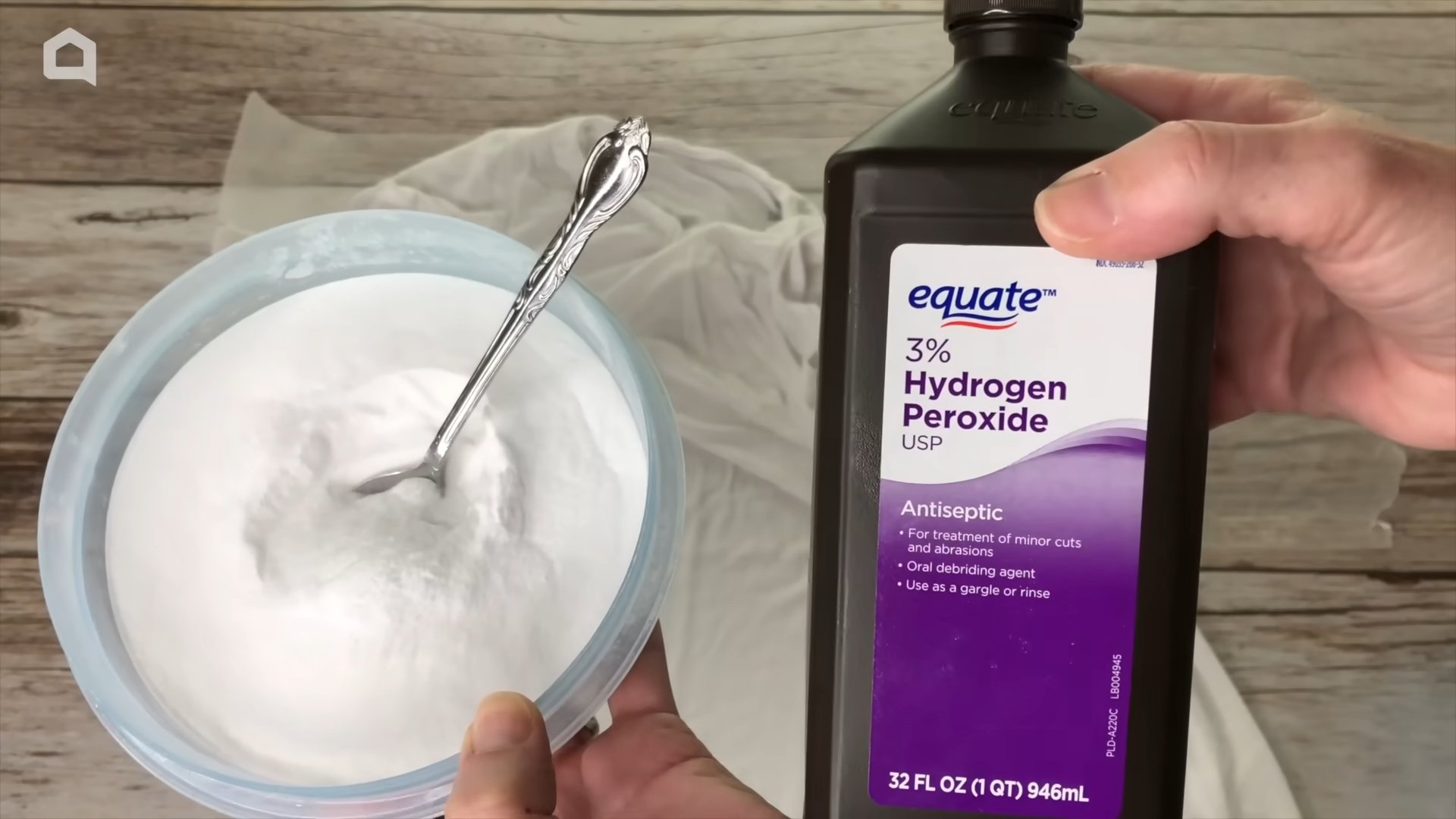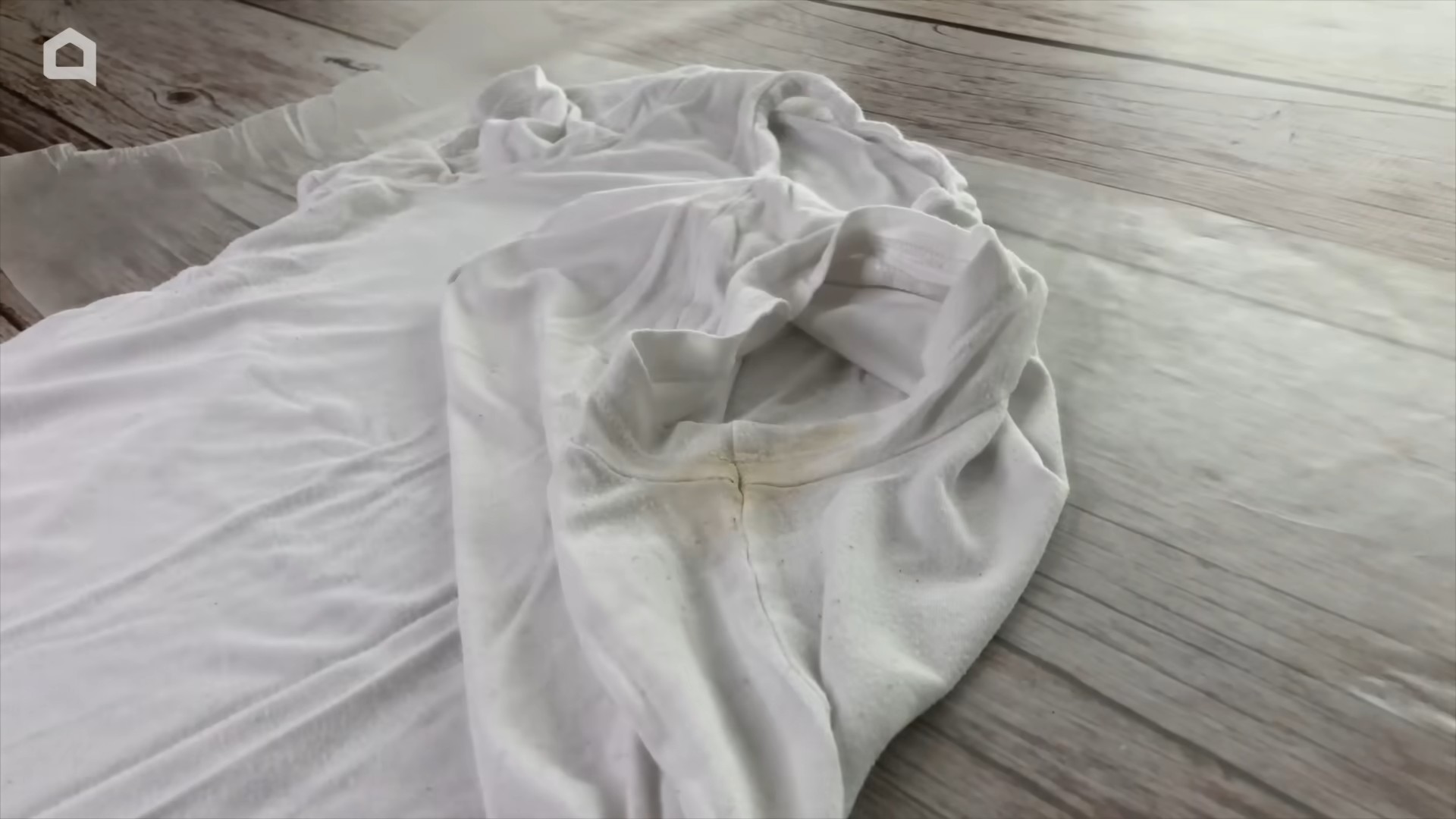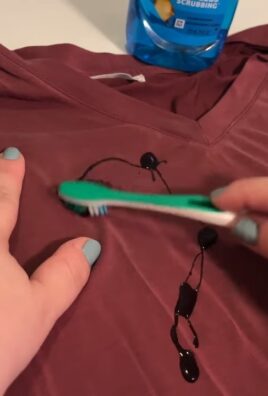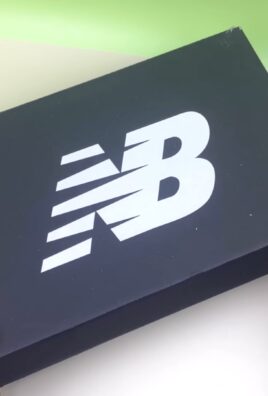Hydrogen Peroxide Cleaning Hacks: Unleash the Sparkling Power of H2O2 in Your Home!
Ever feel like you’re battling a never-ending war against grime and stains? I know I have! But what if I told you the secret weapon you need is probably already sitting in your medicine cabinet? We’re talking about hydrogen peroxide, that unassuming brown bottle holding a world of cleaning potential. For generations, hydrogen peroxide has been a staple in homes, primarily known for disinfecting cuts and scrapes. But its uses extend far beyond first aid!
Think of this article as your ultimate guide to unlocking the hidden cleaning prowess of hydrogen peroxide. From banishing stubborn bathroom mold to brightening dingy laundry, I’m going to share some incredible hydrogen peroxide cleaning hacks that will transform your cleaning routine. These aren’t just quick fixes; they’re effective, eco-friendly, and budget-friendly solutions that will leave your home sparkling.
Why do you need these hacks? Because let’s face it, nobody enjoys spending hours scrubbing! These tips will save you time, money, and effort, allowing you to enjoy a cleaner, healthier home without breaking the bank. So, grab that bottle of hydrogen peroxide, and let’s get started on a journey to a cleaner, brighter, and happier home, one hack at a time!

Unlocking the Power of Hydrogen Peroxide: DIY Cleaning Hacks You Need to Know
Hey there, fellow cleaning enthusiasts! I’m always on the lookout for effective and affordable cleaning solutions, and let me tell you, hydrogen peroxide is a total game-changer. This unassuming bottle, often found in your medicine cabinet, is a powerhouse when it comes to tackling grime, stains, and even sanitizing surfaces. Forget harsh chemicals and expensive cleaners – hydrogen peroxide is your new best friend! I’m going to share some of my favorite DIY cleaning hacks using this amazing stuff.
Understanding Hydrogen Peroxide: A Quick Primer
Before we dive in, let’s quickly cover the basics. You’ll typically find hydrogen peroxide in a 3% solution at your local drugstore. This concentration is safe for most household cleaning tasks. It works by releasing oxygen, which helps to break down stains and kill bacteria. Remember to always test hydrogen peroxide on an inconspicuous area first, especially on colored fabrics or delicate surfaces. And, of course, never mix it with vinegar or bleach, as this can create dangerous fumes. Safety first, always!
Hack 1: Sparkling Bathroom Surfaces
The bathroom can be a breeding ground for germs and grime, but hydrogen peroxide makes cleaning a breeze.
* **What you’ll need:**
* Spray bottle
* 3% hydrogen peroxide
* Clean cloths or sponges
* Optional: Baking soda for stubborn stains
Step-by-Step Instructions:
1. Prepare your spray bottle: Pour the 3% hydrogen peroxide directly into a clean spray bottle. No need to dilute it for most bathroom surfaces.
2. Tackle the toilet: Spray hydrogen peroxide inside the toilet bowl and let it sit for about 20 minutes. Then, scrub with a toilet brush and flush. It helps to disinfect and remove stains. I usually do this as the first step so it has time to sit.
3. Clean the sink and countertops: Spray hydrogen peroxide on your sink, countertops, and faucet. Let it sit for a few minutes, then wipe clean with a damp cloth. This helps to remove soap scum, water stains, and kill bacteria. For tougher stains, you can make a paste of baking soda and hydrogen peroxide, apply it to the stain, let it sit for a bit, and then scrub.
4. Shower power: Spray hydrogen peroxide on your shower walls, door, and floor. Let it sit for about 10-15 minutes, then rinse with water. This helps to prevent mold and mildew growth and removes soap scum. For stubborn soap scum, I sometimes use a scrub brush to help loosen it up.
5. Mirror magic: Spray a small amount of hydrogen peroxide on a clean cloth and wipe your mirrors and glass surfaces. This will leave them streak-free and sparkling. Just be careful not to oversaturate the cloth, as too much liquid can leave streaks.
Hack 2: Laundry Stain Remover Extraordinaire
Hydrogen peroxide is a fantastic alternative to harsh bleach when it comes to removing stains from laundry.
* **What you’ll need:**
* 3% hydrogen peroxide
* Spray bottle or small bowl
* Clean cloths or sponges
* Laundry detergent
Step-by-Step Instructions:
1. Pre-treat stains: Before washing, apply hydrogen peroxide directly to the stain. You can either spray it on or pour a small amount into a bowl and dab it onto the stain with a clean cloth.
2. Let it sit: Allow the hydrogen peroxide to sit on the stain for about 10-15 minutes. For older or tougher stains, you might need to let it sit for longer, even up to an hour.
3. Wash as usual: Wash the garment as usual with your regular laundry detergent. Make sure to check the stain before putting the garment in the dryer, as heat can set the stain. If the stain is still visible, repeat the process.
4. Brighten whites: Add 1 cup of hydrogen peroxide to your washing machine along with your regular detergent when washing white clothes. This will help to brighten them and remove dinginess. It’s a great way to keep your whites looking their best without using harsh bleach.
5. Blood stain removal: Hydrogen peroxide is particularly effective at removing blood stains. Apply it directly to the stain, let it fizz, and then blot with a clean cloth. Repeat as needed until the stain is gone. Then, wash the garment as usual.
Hack 3: Disinfecting Cutting Boards and Kitchen Surfaces
Cutting boards can harbor bacteria, especially after cutting raw meat or poultry. Hydrogen peroxide is a safe and effective way to disinfect them.
* **What you’ll need:**
* 3% hydrogen peroxide
* Spray bottle
* Clean cloths or sponges
Step-by-Step Instructions:
1. Clean the surface: First, wash the cutting board or kitchen surface with soap and water to remove any food particles.
2. Spray with hydrogen peroxide: Spray the surface liberally with hydrogen peroxide.
3. Let it sit: Allow the hydrogen peroxide to sit for about 5-10 minutes to disinfect the surface.
4. Wipe clean: Wipe the surface clean with a damp cloth or sponge.
5. Air dry: Allow the surface to air dry completely before using it again. This ensures that the hydrogen peroxide has had enough time to kill any remaining bacteria.
Hack 4: Freshening Up Sponges and Dishcloths
Sponges and dishcloths can quickly become breeding grounds for bacteria and odors. Hydrogen peroxide can help to freshen them up and kill germs.
* **What you’ll need:**
* 3% hydrogen peroxide
* Bowl or container
* Water
Step-by-Step Instructions:
1. Prepare the solution: Mix equal parts hydrogen peroxide and water in a bowl or container.
2. Soak the sponges and dishcloths: Submerge the sponges and dishcloths in the solution.
3. Let them soak: Allow them to soak for about 15-20 minutes.
4. Rinse thoroughly: Rinse the sponges and dishcloths thoroughly with clean water.
5. Air dry: Allow them to air dry completely before using them again. I usually squeeze out as much water as possible before letting them air dry.
Hack 5: Whitening Grout
Grout can easily become stained and discolored, making your tiles look dingy. Hydrogen peroxide can help to whiten grout and restore its original appearance.
* **What you’ll need:**
* 3% hydrogen peroxide
* Spray bottle or small bowl
* Old toothbrush or grout brush
* Baking soda (optional, for extra cleaning power)
Step-by-Step Instructions:
1. Prepare the grout: If the grout is particularly dirty, you can first scrub it with a mixture of baking soda and water to loosen any grime.
2. Apply hydrogen peroxide: Spray hydrogen peroxide directly onto the grout lines or pour a small amount into a bowl and apply it with an old toothbrush or grout brush.
3. Let it sit: Allow the hydrogen peroxide to sit on the grout for about 10-15 minutes.
4. Scrub the grout: Scrub the grout lines with the toothbrush or grout brush to remove any remaining stains.
5. Rinse with water: Rinse the grout with clean water to remove any residue.
6. Dry the grout: Wipe the grout dry with a clean cloth. For stubborn stains, you can repeat the process or try using a paste of baking soda and hydrogen peroxide.
Hack 6: Cleaning and Disinfecting Toys
Kids’ toys can quickly accumulate dirt and germs. Hydrogen peroxide is a safe and effective way to clean and disinfect them.
* **What you’ll need:**
* 3% hydrogen peroxide
* Spray bottle
* Clean cloths or sponges
Step-by-Step Instructions:
1. Spray the toys: Spray the toys liberally with hydrogen peroxide.
2. Let it sit: Allow the hydrogen peroxide to sit for about 5-10 minutes to disinfect the toys.
3. Wipe clean: Wipe the toys clean with a damp cloth or sponge.
4. Air dry: Allow the toys to air dry completely before giving them back to your children. This ensures that the hydrogen peroxide has had enough time to kill any remaining germs.
Hack 7: Removing Mildew from Shower Curtains
Shower curtains are prone to mildew growth, especially in humid bathrooms. Hydrogen peroxide can help to remove mildew and keep your shower curtain clean.
* **What you’ll need:**
* 3% hydrogen peroxide
* Spray bottle
* Clean cloths or sponges
* Washing machine (optional)
Step-by-Step Instructions:
1. Spray the shower curtain:

Conclusion
So, there you have it! Unlocking the power of hydrogen peroxide cleaning hacks is not just about saving money; it’s about embracing a safer, more effective, and surprisingly versatile approach to keeping your home sparkling. We’ve explored a range of applications, from banishing stubborn stains to sanitizing surfaces and even revitalizing your laundry. The beauty of hydrogen peroxide lies in its simplicity and its eco-friendly nature – breaking down into just water and oxygen, leaving no harmful residues behind.
But why is this DIY trick a must-try? Because it empowers you to take control of your cleaning routine. You’re no longer reliant on harsh chemicals with long lists of warnings. You’re choosing a gentler, yet equally powerful, alternative that’s readily available and incredibly affordable. Think about the peace of mind knowing that you’re creating a healthier environment for yourself, your family, and even your pets.
Beyond the applications we’ve already discussed, the possibilities are truly endless. Consider these variations to further tailor your hydrogen peroxide cleaning experience:
* **Infused Cleaning:** Add a few drops of your favorite essential oil (like lemon, lavender, or tea tree) to your hydrogen peroxide solution for a refreshing scent and added antibacterial benefits. Be sure to test on an inconspicuous area first to ensure the essential oil doesn’t stain.
* **Hydrogen Peroxide Paste:** For particularly stubborn stains on grout or tile, create a paste by mixing hydrogen peroxide with baking soda. Apply the paste to the affected area, let it sit for 15-20 minutes, and then scrub gently with a brush.
* **Sunlight Boost:** Hydrogen peroxide’s bleaching action is enhanced by sunlight. When possible, allow items treated with hydrogen peroxide to air dry in direct sunlight for optimal results. This is especially effective for whitening fabrics.
* **Dilution is Key:** Remember that 3% hydrogen peroxide is generally safe for most household cleaning tasks. However, always dilute it further for delicate surfaces or when in doubt. A 1:1 solution with water is a good starting point.
We truly believe that incorporating hydrogen peroxide into your cleaning arsenal will revolutionize the way you approach household chores. It’s a game-changer for anyone seeking a more natural, effective, and budget-friendly cleaning solution.
Now, it’s your turn! We wholeheartedly encourage you to try these hydrogen peroxide cleaning hacks and discover the amazing benefits for yourself. Don’t be afraid to experiment and find new ways to utilize this versatile cleaner.
Most importantly, we want to hear about your experiences! Share your before-and-after photos, your favorite cleaning tips, and any unique applications you’ve discovered in the comments section below. Let’s create a community of hydrogen peroxide enthusiasts and learn from each other. Together, we can unlock the full potential of this incredible cleaning agent and create cleaner, healthier homes for everyone. So, grab that bottle of hydrogen peroxide and get ready to experience the cleaning power of nature!
FAQ
What exactly *is* hydrogen peroxide, and is it safe to use around my family and pets?
Hydrogen peroxide (H2O2) is a chemical compound that’s essentially water with an extra oxygen molecule. The 3% solution commonly sold in drugstores is generally considered safe for household use when used properly. It breaks down into water and oxygen, making it a much more environmentally friendly alternative to many harsh chemical cleaners. However, it’s crucial to keep it out of reach of children and pets, as ingestion can be harmful. Avoid direct contact with eyes and skin, and always test on an inconspicuous area before applying to delicate surfaces. While safer than many commercial cleaners, it’s still important to treat hydrogen peroxide with respect and follow safety precautions.
Can I use hydrogen peroxide on all surfaces? Are there any surfaces I should avoid?
While hydrogen peroxide is generally safe for a wide range of surfaces, there are a few exceptions. Avoid using it on:
* **Natural Stone:** Marble, granite, and other natural stone surfaces can be damaged by hydrogen peroxide, potentially leading to discoloration or etching.
* **Colored Fabrics:** While hydrogen peroxide can be used to whiten fabrics, it can also bleach colored fabrics. Always test on a hidden area first to ensure it doesn’t cause fading.
* **Wood Finishes:** Some wood finishes can be damaged by hydrogen peroxide, especially if they are delicate or antique. Test on an inconspicuous area before applying.
* **Copper and Brass:** Hydrogen peroxide can tarnish copper and brass surfaces.
Always err on the side of caution and test hydrogen peroxide on a small, hidden area before applying it to a larger surface.
How does hydrogen peroxide compare to bleach in terms of cleaning power and safety?
Hydrogen peroxide and bleach are both effective cleaning agents, but they have different properties and safety profiles. Bleach is a stronger disinfectant and is more effective at killing certain types of bacteria and viruses. However, it’s also much harsher and can be corrosive, irritating to the skin and lungs, and harmful to the environment. Hydrogen peroxide is a gentler disinfectant and is less likely to cause irritation or damage. It’s also more environmentally friendly, as it breaks down into water and oxygen. While bleach might be necessary for certain heavy-duty cleaning tasks, hydrogen peroxide is a great alternative for everyday cleaning and sanitizing.
I’ve heard that hydrogen peroxide loses its effectiveness over time. How can I ensure it’s still potent when I use it?
Hydrogen peroxide does degrade over time, especially when exposed to light and heat. To ensure its potency, store it in a cool, dark place in its original brown bottle. You can also test its effectiveness by pouring a small amount into a sink or container. If it fizzes or bubbles, it’s still active. If it doesn’t, it may have lost some of its potency and may not be as effective for cleaning. While it might still be usable, consider replacing it with a fresh bottle for optimal results.
Can I mix hydrogen peroxide with other cleaning products?
It’s generally not recommended to mix hydrogen peroxide with other cleaning products, especially bleach. Mixing hydrogen peroxide with bleach can create toxic chlorine gas, which can be harmful to your health. It’s also best to avoid mixing it with vinegar, as this can create peracetic acid, which can be irritating to the skin and lungs. When using hydrogen peroxide, it’s best to use it on its own and avoid mixing it with other chemicals.
What concentration of hydrogen peroxide should I use for cleaning?
The 3% hydrogen peroxide solution commonly sold in drugstores is generally sufficient for most household cleaning tasks. Higher concentrations of hydrogen peroxide can be more effective for certain applications, but they can also be more irritating to the skin and eyes. Always dilute higher concentrations of hydrogen peroxide before using them for cleaning.
My hydrogen peroxide bottle doesn’t have a spray nozzle. Can I transfer it to a spray bottle?
Yes, you can transfer hydrogen peroxide to a spray bottle for easier application. However, it’s important to use an opaque spray bottle to protect the hydrogen peroxide from light, which can cause it to degrade. Avoid using a clear spray bottle, as this will reduce its effectiveness over time. Also, be sure to label the spray bottle clearly to avoid confusion with other cleaning products.
How can I use hydrogen peroxide to clean my toothbrush?
To clean your toothbrush with hydrogen peroxide, simply soak the toothbrush head in a cup of 3% hydrogen peroxide for a few minutes after each use. This will help to kill bacteria and keep your toothbrush clean. Be sure to rinse the toothbrush thoroughly with water before using it again.
Can hydrogen peroxide help with mold and mildew?
Yes, hydrogen peroxide can be effective at killing mold and mildew. To use it for this purpose, spray the affected area with 3% hydrogen peroxide and let it sit for 10-15 minutes. Then, scrub the area with a brush and wipe it clean with a damp cloth. Be sure to ventilate the area well while you’re cleaning. For stubborn mold and mildew, you may need to repeat the process several times.
Is hydrogen peroxide safe for septic systems?
Yes, hydrogen peroxide is generally considered safe for septic systems. It breaks down into water and oxygen, which are both harmless to septic systems. Unlike some harsh chemical cleaners, hydrogen peroxide won’t kill the beneficial bacteria that are essential for the proper functioning of a septic system. However, it’s still important to use hydrogen peroxide in moderation and avoid pouring large amounts down the drain at once.




Leave a Comment